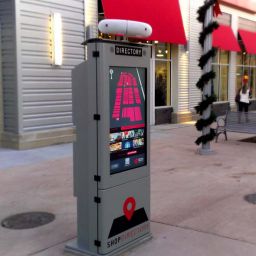At the beginning of this blog series we discussed the importance of a true software platform for kiosk and digital signage deployments. Last week we considered custom applications and how they impact the customer experience. While both the software platform and the software application are crucial to the success of a kiosk or digital signage deployment, it’s important to remember the differences between the two and what role each plays.
The software platform hardens the operating system and allows for integration of multiple peripheral components; it will also provide a “heartbeat” to a remote server and allow you to monitor devices remotely. A software application, on the other hand, is created specifically for the kiosk experience and will allow a user to interact with a graphic user interface (GUI), as well as multiple components, such as printers, cameras, scanners, etc.
Software platforms are often available as of-the-shelf solutions, but a software platform alone usually only offers a secure browser for viewing whitelisted web content. As we discussed last week, it’s the kiosk-specific application that creates a great user experience. But how do companies — large or small — decide whether to invest in a custom application versus an off-the-shelf, turnkey application? Even more important, where is the line between what is considered to be off the shelf and what is custom? Do off-the-shelf applications even exist? What are the benefits of an off-the-shelf application? What are the limits? For reference, we’ve compiled the key features of current off-the-shelf software application solutions, their benefits and their limits.
A true off-the-shelf solution has many benefits. They are designed for ease of use and often do not require understanding of difficult computer programming. This makes it easy for even the smallest of organizations to support. Off-the-shelf applications offer ways to incorporate your own company’s branding and have reasonable technical requirements that cover a wide range of hardware and operating systems.
Off-the-shelf applications are designed so content can be easily organized and navigated. While these features can simplify the process, depending on your business goals, you may need a custom application that offers more flexibility. For example, a hospital looking for a patient check-in solution may need to invest in a custom application that allows compatibility with their EMR system, just as a museum may need to invest in a customizable wayfinding application depending on the complexity of its floor plan.
The integration and compatibility limitations can make it difficult for certain industries to leverage an off-the-shelf application as a software solution. Organizations looking for a payment solution will likely want to invest in a custom application, as integrating with particular payment processors almost always necessitates customization.
When searching for a software platform and application, the most important thing to consider is your use case and target audience. A hospital or museum may need a completely customized application in order to provide its users the best possible experience. However, if you’re looking for a virtual receptionist, employee directory, advertising platform or corporate bulletin board solution, an off-the-shelf software application may be the best option to decrease up-front costs, increase user engagement and boost ROI.




